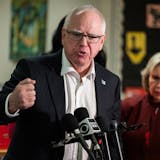The question about whether Joe Biden should step aside in his quest for a second presidential term is interesting because the result of the election won’t necessarily indicate the soundness of the decision.
Regardless of the outcome in November, there is no way of knowing whether it would have been different with another candidate, in spite of what the experts will espouse.
We look at results and conclude the decision we made was sound or unsound. But results are never guaranteed, so the process for making our decision matters more than the results. A good outcome with a bad process is simply luck. Your goal should be to increase the chances of making a good decision.
Here are some financial examples:
When you are looking to move, what is the process you are using to make your decision? Are you falling in love with a house? Are you moving to a neighborhood where your friends live? Are you trading a bigger home for longer commutes? There will always be a number of variables that will impact your feelings about where you live, so create your list of the things that matter most to you (as well as what you wish to avoid) and then weigh those items accordingly.
When clients are talking about what they love about their living arrangements, they almost always gush about their neighborhoods, their commutes, their community amenities. They rarely talk about the actual features of their homes, although an ability to age in place seems to eventually become more important. We encourage homebuyers to actually visit neighborhoods before they even look for houses. Check out where you will grocery shop, what other important locations are close to you, which school buses come through the area (so you have a sense of whether kids are going to public or private schools). And take some time to see how this fits for you. It is far easier to fix what you buy than where you bought it.
So you bought a stock or crypto currency, etc., at the bottom a few years ago, and now it makes up 75% of your investment assets. Well, that certainly worked out, but what was your process in making that decision, and what do you do now? We tend to fall in love with successes, attribute them to a great skill that we uniquely hold and expect we can repeat them.
Let’s try this thought experiment: You just inherited a bunch of money and walk into your broker’s office. She suggests you put three-quarters of your cash into one stock or type of crypto, etc. Would you think, “What a great idea”? Or would you run away and not even bother to validate parking?

![A black bear stopped after crossing Big Bay Road on Madeline Island, the largest of the Apostle Islands in Wisconsin, on Monday, May 31, 2021. ]](https://arc.stimg.co/startribunemedia/PWNYGIY3WTSWDBOGOYD775DPP4.jpg?&w=80&ar=1:1&fit=crop)

